Traffic Calming
Traffic calming uses physical measures like speed humps, speed cushions, raised intersections and crossings, curb extensions, median islands and traffic circles to address issues like speeding and shortcutting.
Measures can be installed on residential or collector streets with a posted speed limit of 50 km/h or less that meet the requirements.
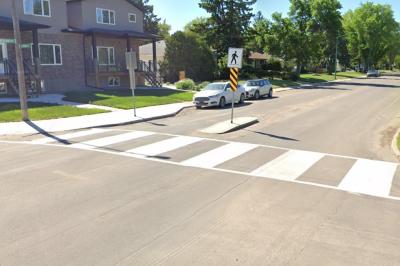
Traffic calming aims to ensure safe and efficient movement on city streets with:
- Slower vehicle speeds
- Fewer, less sever collisions
- Increased safety for all road users, particularly pedestrians and cyclists
- Reduced reliance on police enforcement
- Enhanced roadway environment and streetscape
- Improved access to all modes of transportation
- Reduce 'cut-through' or non-local traffic for local streets
How it Happens
Traffic calming works in four phases in the City of Saskatoon:
- Phase 1: Application and Data Collection
- Phase 2: Traffic Calming Plan
- Phase 3: Final Design and Approval
- Phase 4: Implementation and Evaluation
Traffic Calming Petitions
Fill out a petition for an Active Traffic Calming Review. Only residents who live within the study area are eligible to sign a petition.
Hilliard Street - Eastlake Avenue to Broadway Avenue (Closing Date: December 2025)
- 85th percentile speed during school zone hours is 50 km/h
- 85th percentile speed outside of school hours is 50 km/h
- Average daily traffic volume is 265 vehicles per day

Diefenbaker Drive - Childers Court to McArthur Lane (Closing Date: December 2025)
- 85th percentile speed is 54 km/h
- Average daily traffic volume is 5,790 vehicles per day

23rd Street West - Ottawa Ave North to Montreal Ave North (Closing Date: December 2025)
- 85th percentile speed during school zone hours is 36 km/h
- 85th percentile speed outside of school hours is 39 km/h
- Average daily traffic volume is 910 vehicles per day
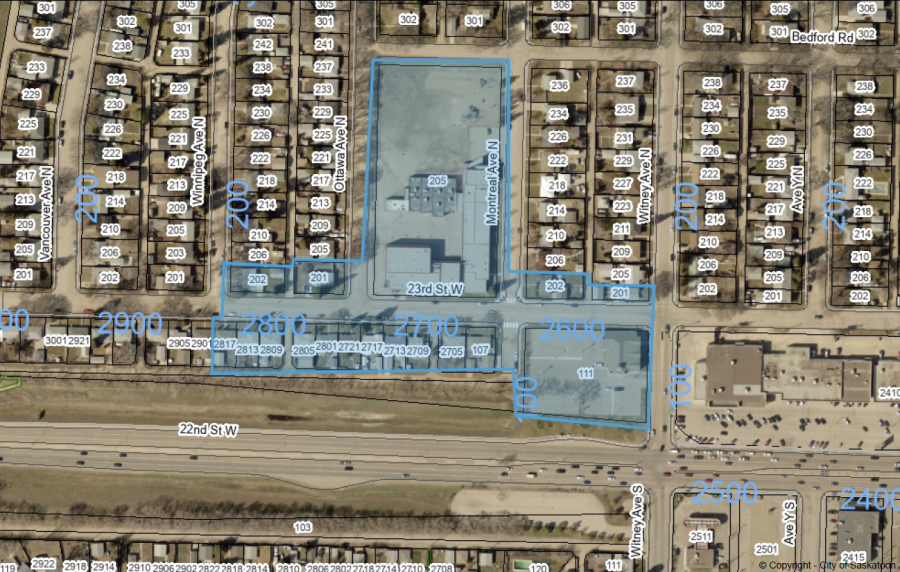
14th Street East - Saskatchewan Crescent to Temperance Street (Closing Date: December 2025)
- 85th percentile speed is 35 km/h
- Average daily traffic volume is 280 vehicles per day
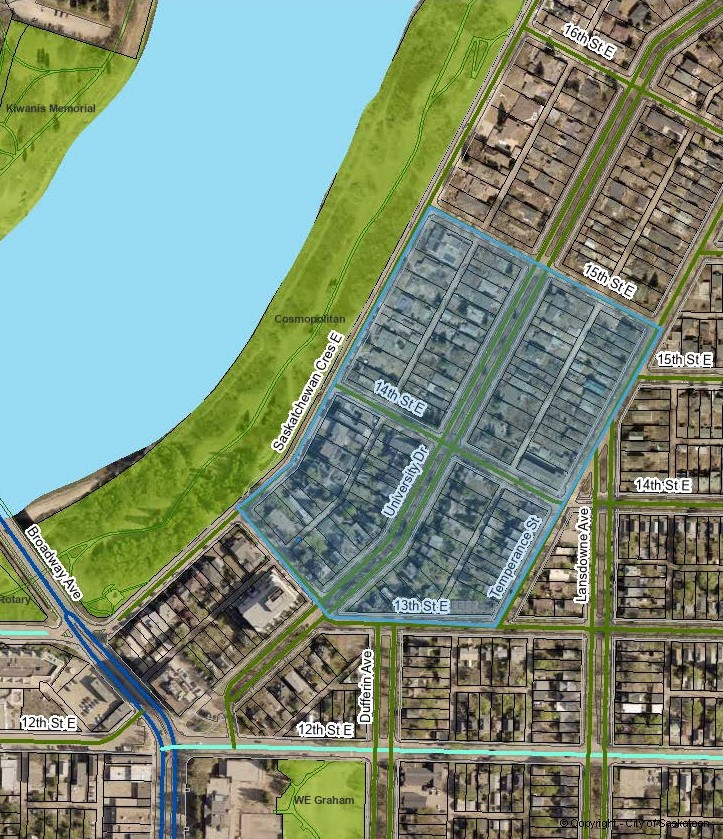
3rd Avenue North - 25th Street to Queen Street (Closing Date: December 2025)
- 85th percentile speed is 55 km/h
- Average daily traffic volume is 2,700 vehicles per day
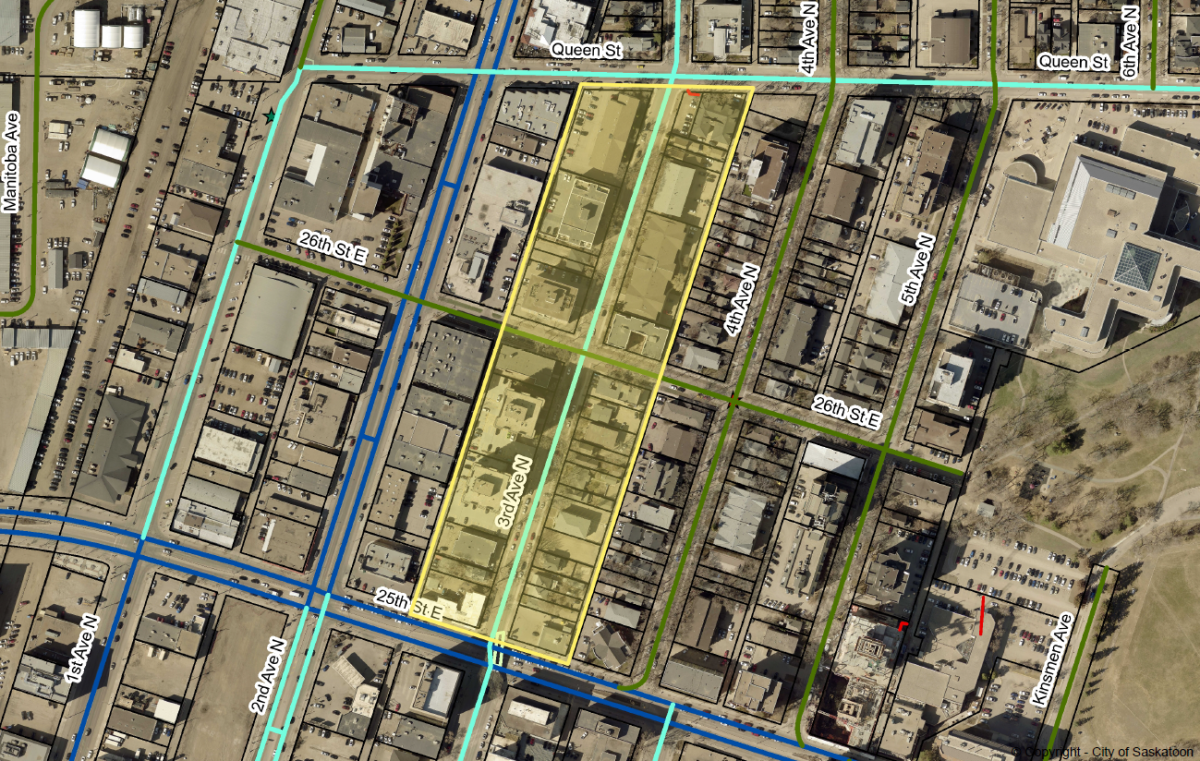
Closed Traffic Calming Petitions
The traffic calming petitions for the locations listed below are now closed. Closed petitions will not be eligible for review for at least two years after the date of closure.
| Street | Between | 85th Percentile (km/h) | AADT (vehicles/day) | Date Closed | Traffic Calming Phase | Support Received |
| Adilman Drive | Wanuskewin Road and Zeman Crescent | 56 | 3,850 | June 2024 | Phase 2 (60% support) | Yes |
| Goerzen Street | Wanuskewin Road and Russell Road | 58 | 3,050 | June 2024 | Phase 2 (60% support) | Yes |
| McClocklin Road Lane | McClocklin Road and Junor Avenue | 34 | 70 | July 2024 | Phase 2 (2% support) | No |
| Parkdale Road | Moss Avenue and McKercher Drive | 51 | 3,120 | July 2024 | Phase 2 (18% support) | No |
| Richardson Road | McClocklin Road and 37th Street West | 67 | 3,220 | July 2024 | Phase 2 (2% support) | No |
| Sommerfeld Avenue | 3rd Street East and 1st Street East | 52 | 130 | July 2024 | Phase 2 (3% support) | No |
| Kloppenburg Crescent | Evergreen Boulevard and Kloppenburg Court | 47 (playground zone hours) | 570 | October 2024 | Phase 2 (13% support) | No |
| Adelaide Street | Preston Avenue and Louise Avenue | 58 | 1,200 | January 2025 | Phase 2 (28% support) | No |
| Childers Way | Childers Bend and Childers Crescent | 38 (playground zone hours) | 200 | April 2025 | Phase 2 (20% support) | No |
| Salisbury Drive | Early Drive and 92 Salisbury Drive | 58 | 740 | May 2025 | Phase 2 (18% support) | No |
| Eastview | Eastview and Arlington Avenue | 48 | 1,010 | June 2025 | Phase 1 (18% support) | No |
| Poplar Crescent | 8th Street West to Idylwyld Crescent | 42 (playground zone hours) | 460 | June 2025 | Phase 1 (0% support) | No |
| Elevator Road | 11th Street West to Ortona Street | 49 | 1,100 | July 2025 | Phase 1 (22% support) | No |
| 17th Street West | Avenue G to Spadina Crescent | 50 | 3,000 | August 2025 | Phase 2 (21% support) | No |
| Spadina Crescent West | Avenue D to Avenue G | 55 | 3,900 | August 2025 | Phase 2 (21% support) | No |
| Kingsmere Boulevard | Ecole Lakeview School Zone | 43 (school zone hours) | 5,000 | October 2025 | Phase 1 (0% support) | No |
| Kingsmere Boulevard | Stillwater Drive to Christopher Road | 51 | 8,000 | October 2025 | Phase 1 (0% support) | No |
| Main Street | Lansdowne Avenue to Albert Avenue | 49 (playground zone hours) | 1,530 | October 2025 | Phase 1 (0% support) | No |
Active Traffic Calming Reviews
There are currently no active traffic calming reviews.
Types of Traffic Calming Devices
Speed Humps
Speed humps are raised areas on a roadway, typically wider and more gradual than speed bumps, designed to slow down vehicular traffic.
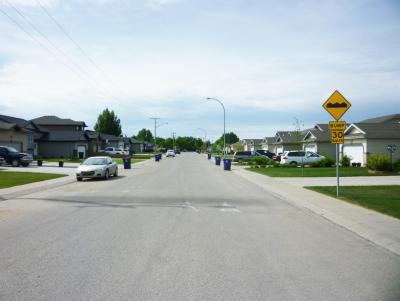
Speed Cushions
Speed cushions are speed humps that have wheel cut outs that allow transit and emergency access vehicles to cross the speed cushion unaffected.

Curb Extensions
Curb extensions are protruding sections of the sidewalk or pedestrian area into the roadway, typically at intersections or crosswalks, which narrow the roadway and cause drivers to slow down.
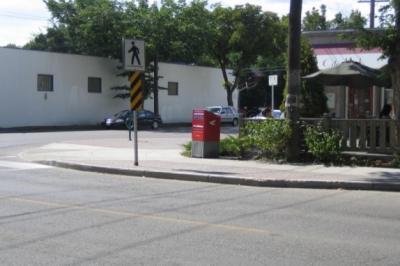
Median Islands
Median islands are located between opposing lanes of traffic, designed to provide additional space for pedestrians and landscaping while narrowing roadways, causing drivers to slow down.
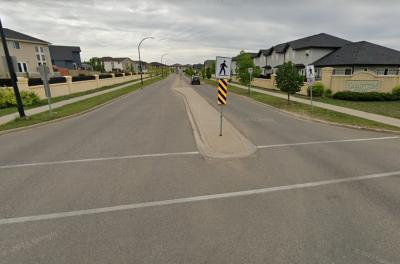
Raised Intersections
Similar to speed humps, raised intersections elevate the entire intersection, including crosswalks, to the same level as the sidewalk, creating a noticeable hump that prompts drivers to slow down as they approach.
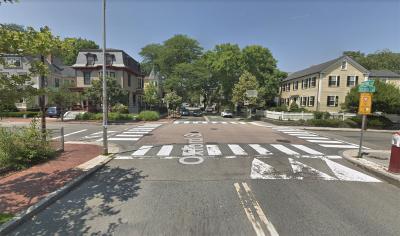
Raised Crossings
Raised crossings emphasize pedestrian safety by providing a clear and continuous path for pedestrians to cross the street at the same level as sidewalks, while causing drivers to slow down as they approach.
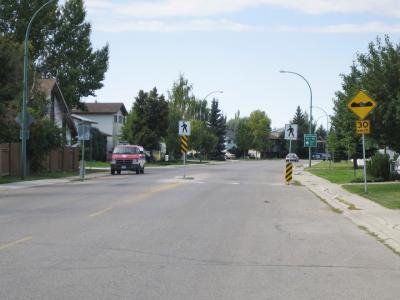
Traffic Circles
Traffic circles involve a circular area in the centre of an intersection, designed to improve traffic flow, reduce congestion and enhance safety. The circular design naturally encourages drivers to slow down.
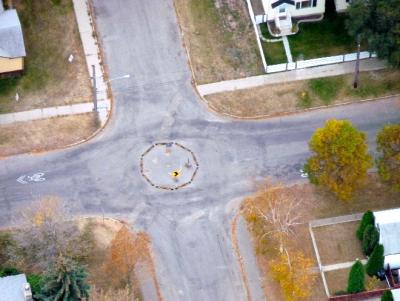
Speed Boards
Speed boards are speed display or radar speed signs designed to encourage drivers to reduce their speed by providing real-time feedback on their current driving speed.
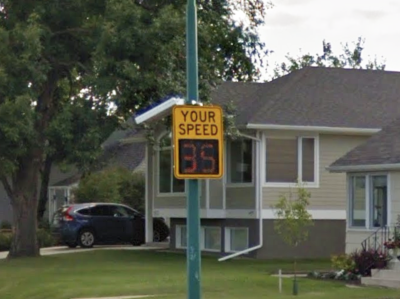
Chicanes
A chicane consists of multiple curb extensions on alternate sides of a roadway. The chicane requires the driver to steer from one side of the roadway to the other and also narrows the road. The purpose of the chicane is to reduce overall speeds by forcing the lateral shift of vehicles as they pass through the device, and also discourages shortcutting traffic.
